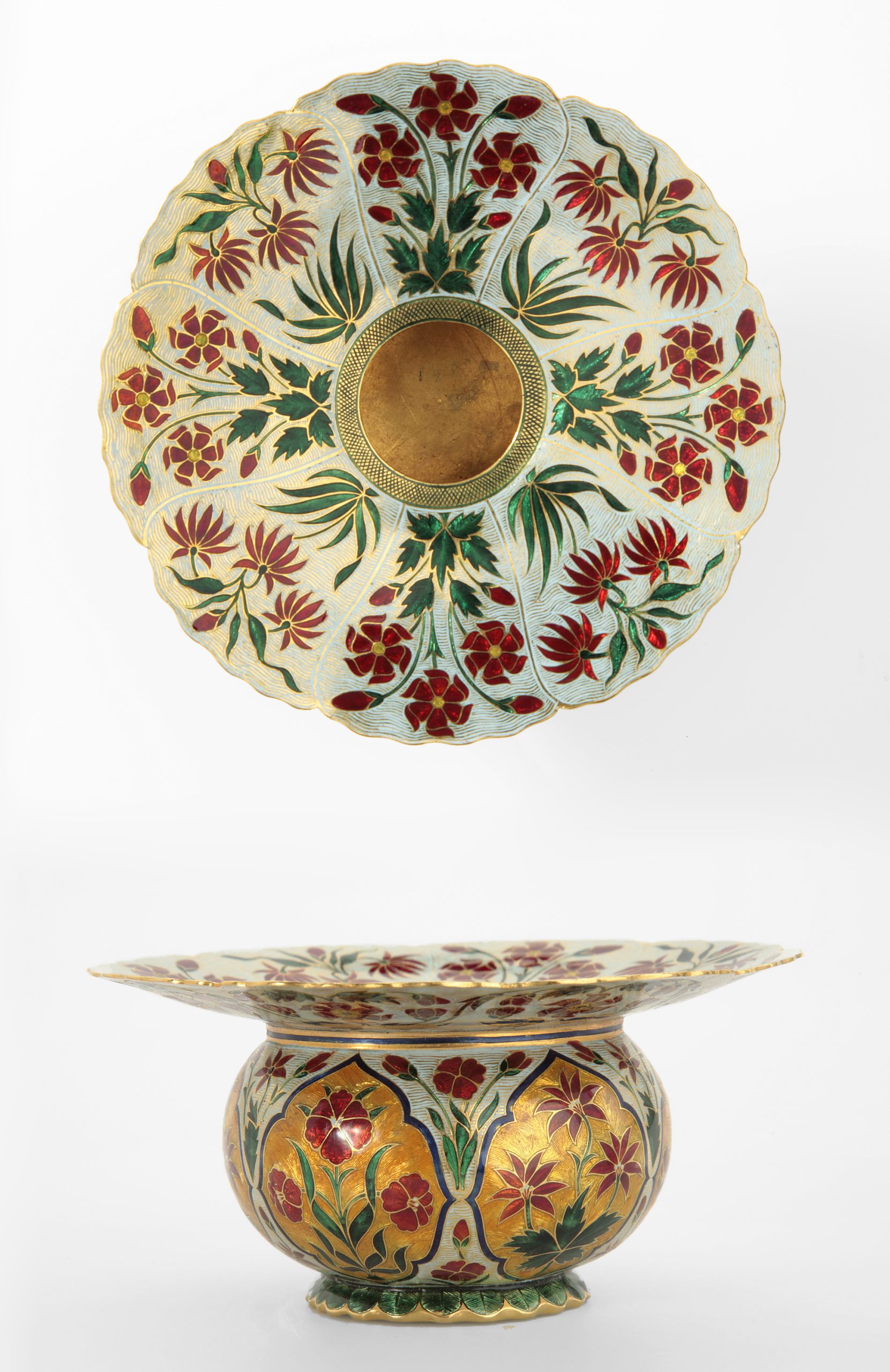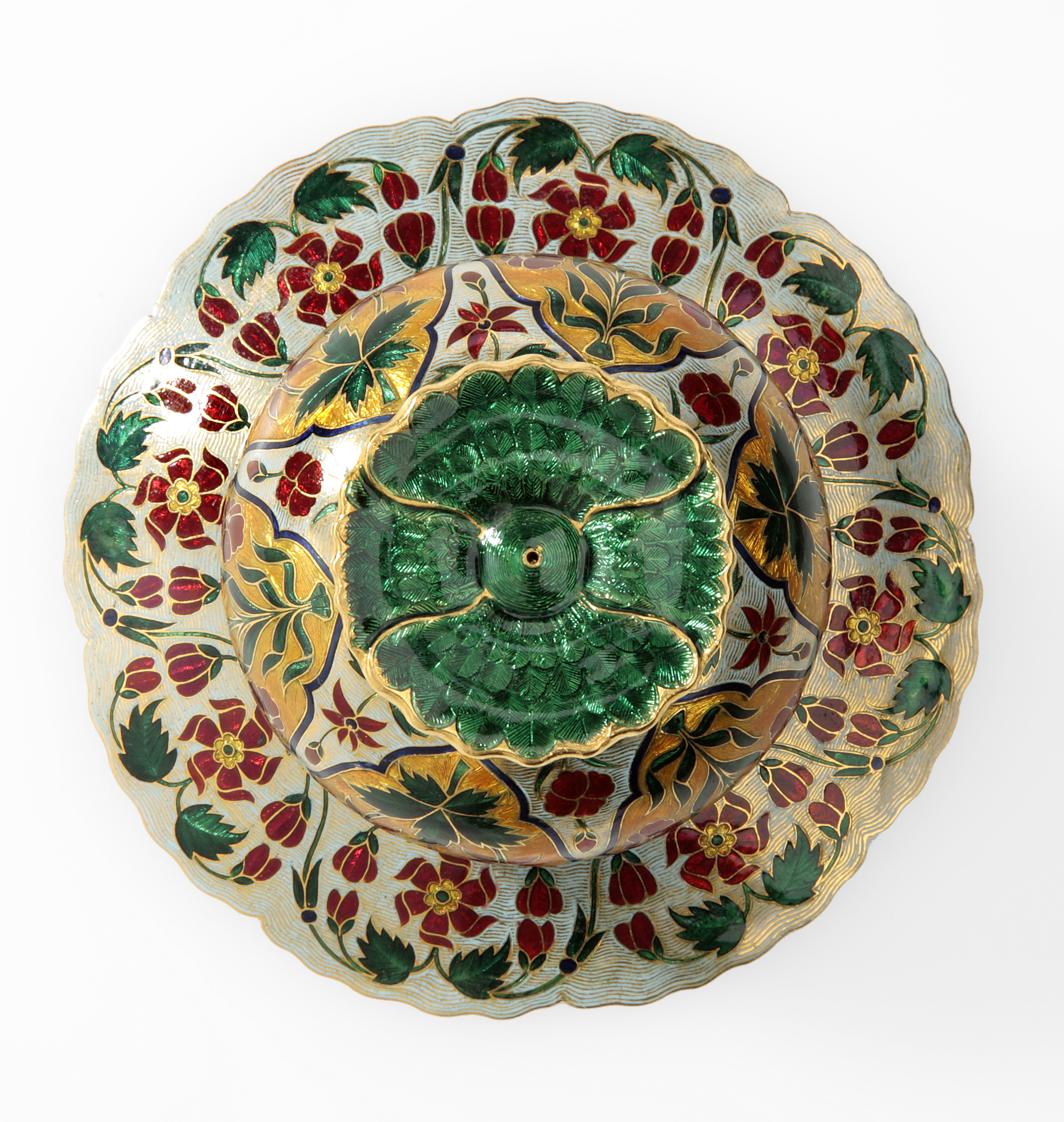 Print Page
Print Page
 Print Page
Print Page
Location: Rajasthan, India
Materials: gold, enamelled in translucent red, green, yellow, dark blue and opaque pale blue
Dimensions: 5.5 x 11.1cm
Accession Number: JLY 1072
Other Notes:
The quality of workmanship suggests that this spittoon was made under princely patronage in Rajasthan, probably in Jaipur, where some of the most accomplished goldsmiths and jewellers of the period were working. The main decoration consists of alternating, highly stylized flowering plants on a yellow enamelled ground, or – unusually – a wave-like pattern created by undulating lines of gold and pale opaque blue enamel. As is often the case with the finest Mughal enamelled objects, the underside of the rim and the base are equally finely decorated.
Spittoons were adopted in Mughal India along with the ancient Indian practice of chewing pan (leaves of the betel nut mixed with various ingredients, including cloves, cardamom, lime, catechu and sliced betel nut).
Bibliography:
P. Moura Carvalho, Gems and Jewels of Mughal India. Jewelled and enamelled objects from the 16th to 20th centuries, The Nasser D. Khalili Collection of Islamic Art, volume XVIII, London 2010, cat.110, pp.208–9.
J.M. Rogers, The Arts of Islam. Masterpieces from the Khalili Collection, London 2010, cat.427, p.358.

